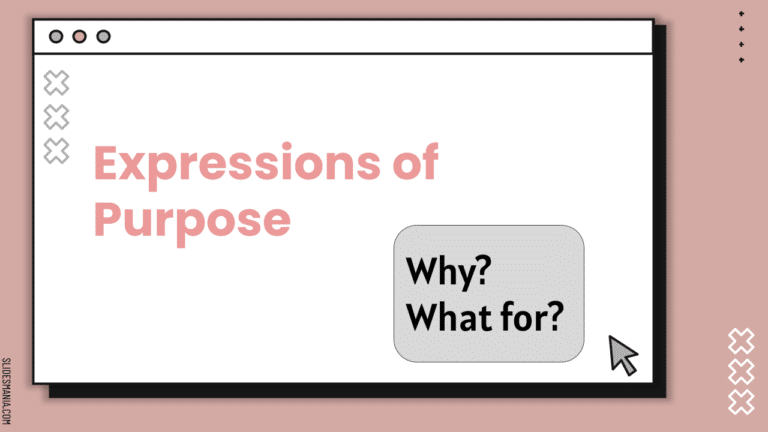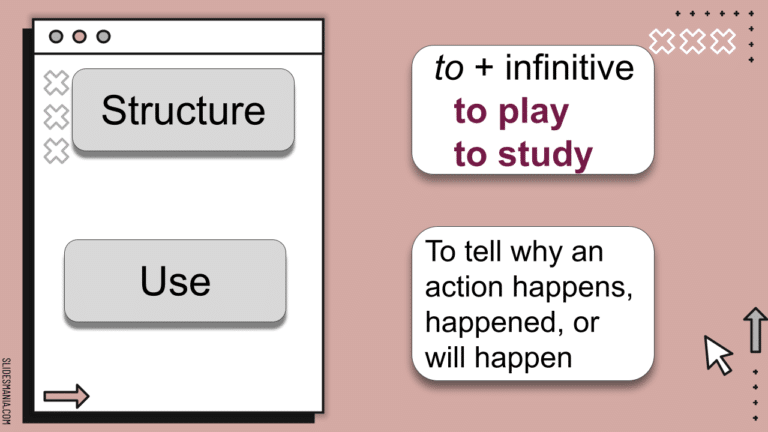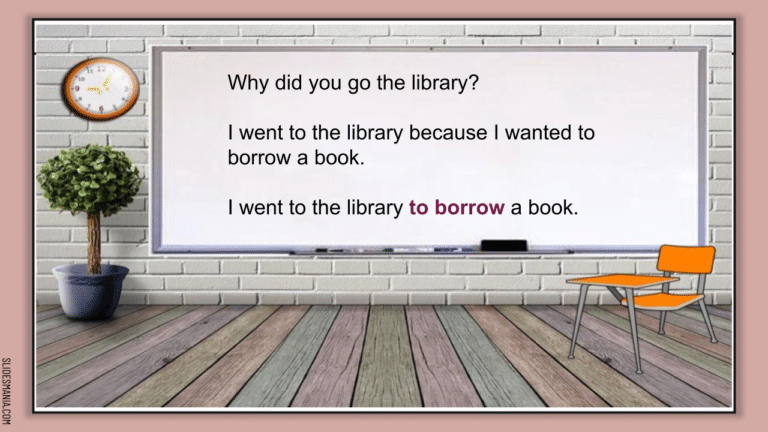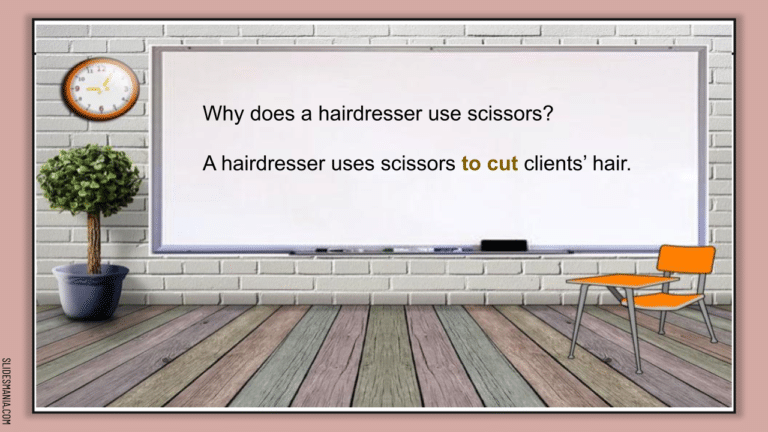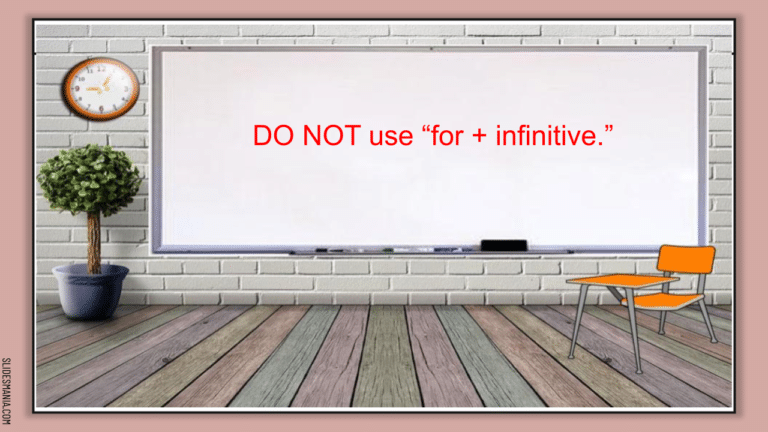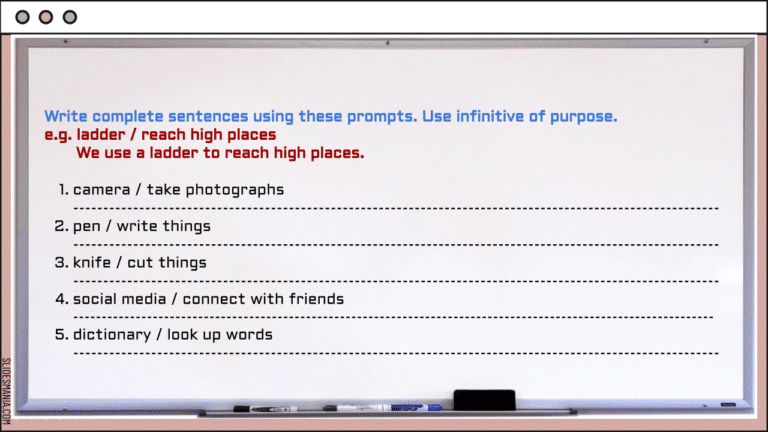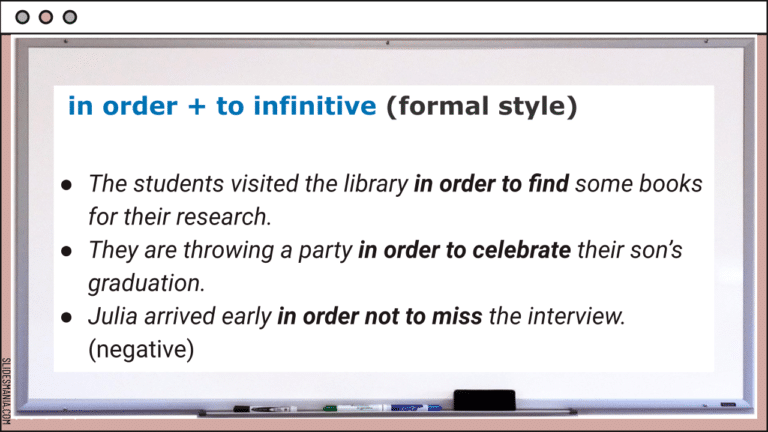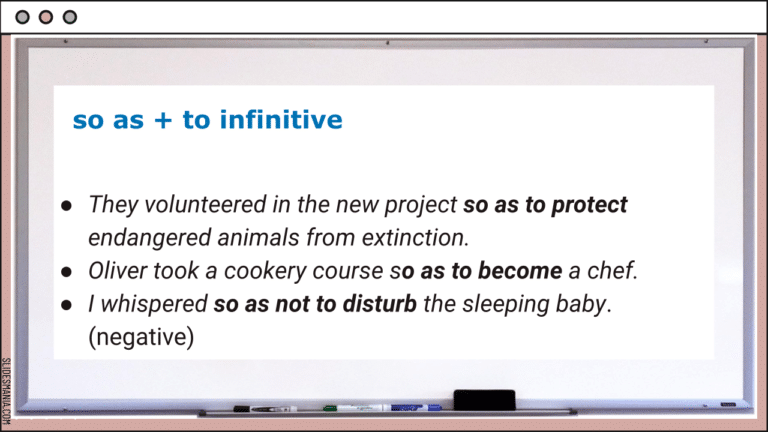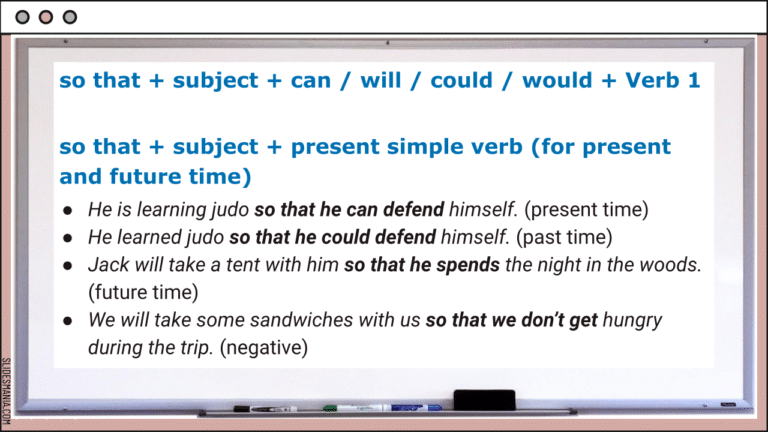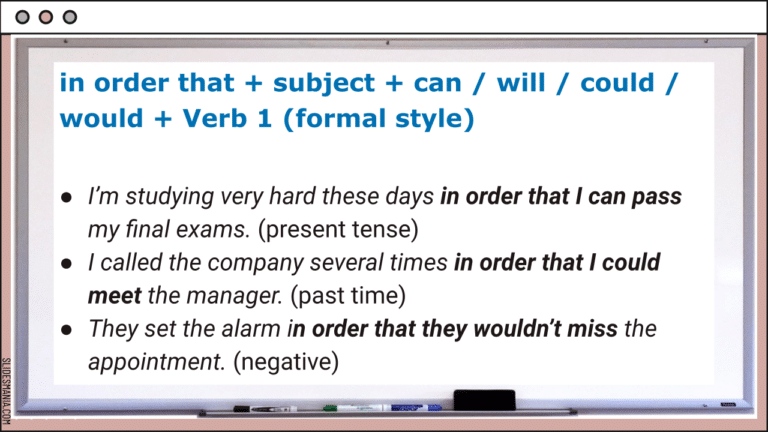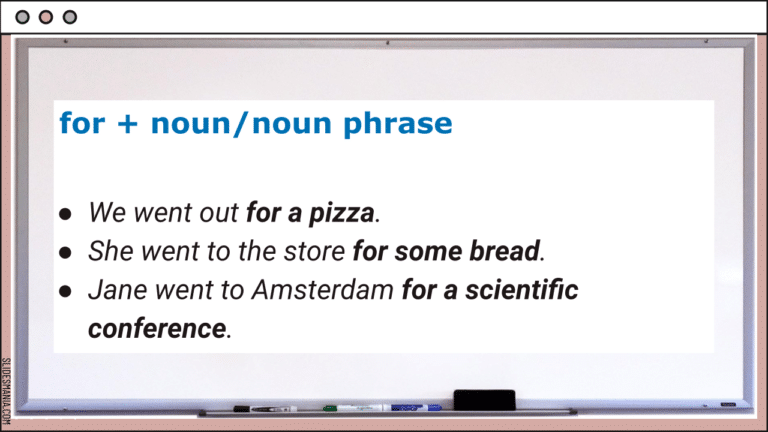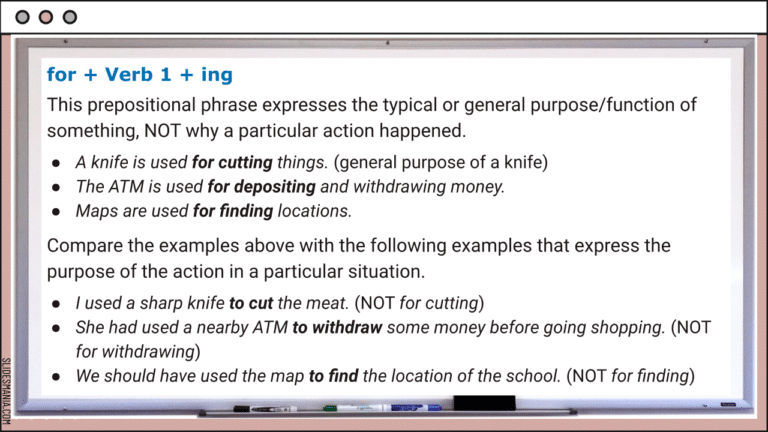Table of Contents
Introduction
The purpose of an action is the reason or intention why the action happened. It can be expressed in different ways in English.
We use infinitive of purpose, subordinate clauses of purpose and for verb-ing to answer the questions, “Why?” or “For what reason?”
- Why did Tom buy a new laptop?
– He bought a laptop to attend online classes.
(The purpose/reason why he bought a new laptop)
Introducing the purpose of an action
We state why we did, do, or will do an action with the following structures.
to infinitive
- She went to the pharmacy to get a painkiller.
- We used the GPS to find our way to the theater.
- He enrolled on a knitting course to learn how to make knitted clothes for my little daughter.
in order + to infinitive
(This structure is more common in formal contexts.)
- The students visited the library in order to find some books for their research.
- They are throwing a party in order to celebrate their son’s graduation.
- Julia arrived early in order not to miss the interview. (negative)
so as + to infinitive
- They volunteered in the new project so as to protect endangered animals from extinction.
- Oliver took a cookery course so as to become a chef.
- I whispered so as not to disturb the sleeping baby. (negative)
so that
We use so that in two structures:
1. so that + subject + can / will / could / would + verb 1
2. so that + subject + present simple verb (for present and future time)
- He is learning judo so that he can defend himself. (present time)
- He learned judo so that he could defend himself. (past time)
- Jack will take a tent with him so that he spends the night in the woods. (future time)
- We will take some sandwiches with us so that we don’t get hungry during the trip. (negative)
Note: In informal situations, that is left out:
- She uses sun cream so she can protect her skin.
Note: So that can mean “with the result that.”
- Make sure to proofread your writing before submitting it so that it is error free.
in order that
in order that + subject + can / will / could / would + verb 1
(This structure is more common in formal contexts.)
- I’m studying very hard these days in order that I can pass my final exams. (present tense)
- I called the company several times in order that I could meet the manager. (past time)
- They set the alarm in order that they wouldn’t miss the appointment. (negative)
for + noun/noun phrase
- We went out for a pizza.
- She went to the store for some bread.
- Jane went to Amsterdam for a scientific conference.
for + verb 1 + ing
This prepositional phrase expresses the typical or general purpose/function of something, NOT why a particular action happened.
- A knife is used for cutting things. (general purpose of a knife)
- The ATM is used for depositing and withdrawing money.
- Maps are used for finding locations.
Compare the examples above with the following examples that express the purpose of the action in a particular situation.
- I used a sharp knife to cut the meat. (NOT for cutting)
- She had used a nearby ATM to withdraw some money before going shopping. (NOT for withdrawing)
- We should have used the map to find the location of the school. (NOT for finding)
Position
In a sentence, the expression of purpose comes after the action as show in all the examples above. However, it may come at the beginning of the sentence in formal contexts.
- So as to decrease the expenses, the company dropped a few items from the budget.
- In order that we could meet the deadline, we had to work on weekends.

